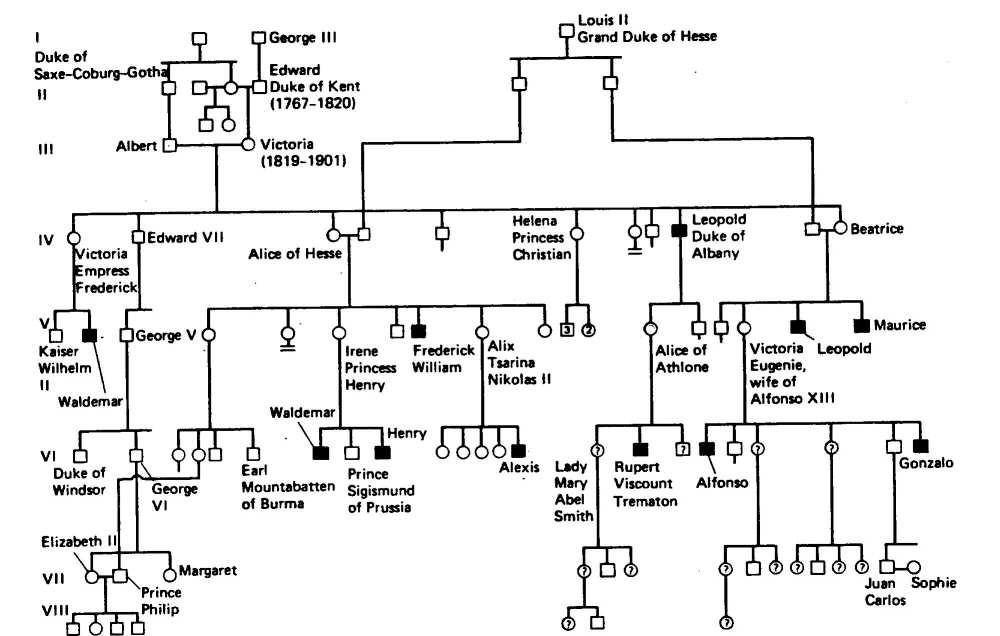- Captain
Kirk leaves one Fribble on the planet Quohog, which has plenty
of food and no predators. If each Fribble produces six offspring
every eight hours (then the parent dies), how many Fribbles will
there be by the end of the week? What is their doubling
time?
- If a town
of 10,000 people doubles every five years, how big will it be
in 2026? Suppose that instead of doubling, toxic waste contamination kills
off 20% per year; how many will be left in 2026?
- Well's Time
Traveler saw the sun appear to grow large and red. Why did this
happen, in the author's view? How will our sun actually turn red
some day? Why was the process of stellar evolution essential for
human evolution? (Wells didn't know this, but we do.)
- Why does
natural selection favor individuals who overpopulate their habitat
and cause precipitous population decline? What is the real
reason the lemmings "jump in the sea"? Do the lemmings have alternatives?
Explain.
- Jane Grey
interviews a prospective student for the Westchester School for
Mutants. The student is completely resistant to all forms of influenza,
including swine flu, avian flu, and tribble flu. The condition
is dominant and not X-linked.
If this Mutant had a son, what is the son's chance of resisting
next year's sandworm flu?
Suppose on another planet the Mutant allele frequency (p) is one
in three hundred.
What fraction of the population shows flu resistance?
Suppose
we find that the rare individuals who inherit two copies of
the flu Mutant allele have defective immune systems and die
by age 20. How does this modify our definition of "dominant"
inheritance for this condition?
-
What
is the role of population size, gene frequencies, and genetic
drift in evolution of new species? Explain.
- If natural
selection means "survival of the fittest," than how can one "fittest"
species evolve into more than one? How can more than one be "the
fittest"? Explain.
- In the X-Files,
the giant fluke evolved to look like a primate. What do we call
this kind of evolution? Can you imagine (in a followup episode)
a possible explanation (however unlikely) for how this might occur?
Would the fluke ever be able to interbreed with real primates?
Why or why not?
- In Galapagos,
explain how Mary ensures the future of the human species, and
how her actions differ from "Eve." Why does natural
selection sometimes favor individuals who help neighbors raise
offspring, instead of raising their own? What conditions favor
this kind of selection?
- Explain
how each of the following traits is determined by genes and/or
environment: Huntington’s disease; Diabetes; Cancer; Spoken
language.
- Explain
reductive (or degenerative) evolution. Why does it work?
Cite examples from Wells’s The Time Machine and from
Vonnegut's Galapagos.
- Explain
the difference between genetic and cultural evolution. Use
an example to show how these may be confused.
- Why do individuals
move out of successful populations (migrate or disperse)?
Give examples of physical and biological modes of dispersion or
migration. For biological modes, give examples involving
parasitism or mutualism. Explain why each is parasitic or
mutualistic.
- Vonnegut
offers several hypotheses to explain how tortoises traveled to
Galapagos. Explain evidence supporting and evidence refuting
each hypothesis. Which hypotheses can neither be refuted
nor proved? Why not?
-
Suppose
you ingest 500 Salmonella bacteria in contaminated
turkey, and in three hours you feel sick; there are now 500,000
bacteria. What is their doubling time in your body, in minutes?
- A male bird
is equally likely to offer food to his own chicks, or to his mother's
chicks. Why? Explain by calculating his percent relatedness to
his own chicks, and to his mother's chicks. (Assume that both
hens are 100% faithful to their mates. In real life, about 90%
may be typical.)
- According
to a study published in the Weekly World News, 1/5 of Americans
have been abducted by aliens. Suppose that the trait desired by
aliens is genetic, with recessive inheritance; and that every
person homozygous for this trait gets abducted.
What is the allele frequency (p) of the alien abduction trait?
What percentage of Americans are carriers of the alien abduction
trait; that is, they don't get abducted, but could pass it on
to a child?
If some of those abducted never come back, what will happen to
the Hardy-Weinberg equilibrium? What do we call this effect?
In one very small, isolated
town, the entire population claims to have experienced abduction.
What do we call this effect?
- Explain the inheritance of the trait in this pedigree. If there are carriers, name as many as you can.
 19. Many human
societies promote “cross
cousin marriage.”
a. What
fraction of your genes do you share with your first cousin?
b. Under
what conditions would marrying your cousin be favored biologically?
Under what conditions would it be detrimental?
20. A Klingon
anthropologist tries to explain the pointed ears of Vulcans by
the hypothesis that Vulcan women prefer men with more pointed
ears, so many generations lead to Vulcans of both sexes having extremely pointed
ears.
What form
of natural selection does this illustrate? What problems do
you see with the Klingon hypothesis? How might the hypothesis
be modified?
|